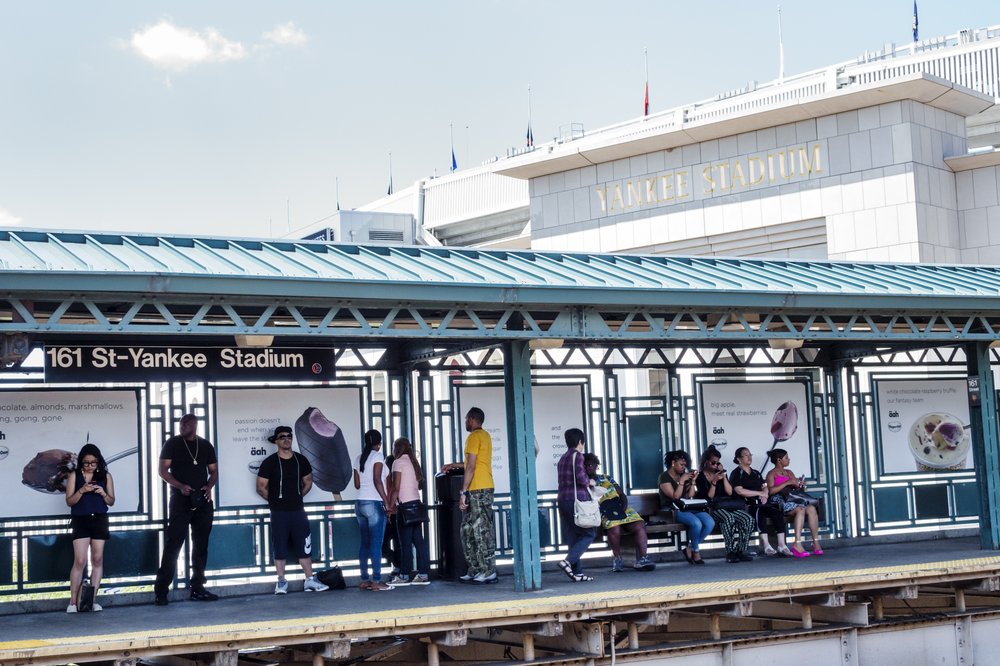Bronx left out of MTA's plan to fix NYC subway signals
Aug. 15, 2025, 6:31 a.m.
The MTA has since 2020 approved more than $10 billion for subway signal upgrades. Not a dollar of that money will go towards infrastructure in the Bronx.

The MTA is leaving the Bronx behind in a key effort to speed up subway service.
Transit officials have billed the agency’s push to upgrade the city’s aging, unreliable subway signals as a silver bullet to make trains faster and more reliable. Much of the signal system, which is used to direct trains along the tracks, runs on 1930s technology and is prone to breakdowns.
Since 2020, the MTA has approved a combined $10.8 billion to upgrade those systems along a combined 162 miles of subway tracks. That includes $5.4 billion that was approved earlier this year through the agency’s new five-year construction plan. Through the plan, crews will install “communication-based train control” systems that enable trains to be automatically driven by computer systems.
The MTA plans to begin upgrades to signals on several of the subway’s lettered lines in Brooklyn, Manhattan and Queens over the next five years. Modern signal systems are already in place along the entire length of the L and 7 lines — two of the most reliable subway routes.
But no money from the signal plan will go towards upgrading even a single inch of track in the Bronx. The lack of investment adds to a frustration that’s well-known to residents and leaders in the city’s lowest-income borough, who already feel they’re left behind. MTA officials acknowledged the lack of signal upgrades for Bronx riders — but noted they’re planning other major investments into the borough’s mass transit infrastructure.
“ I think the Bronx is forgotten about,” said commuter Randy Batista, who lives in the borough.
Others, like lifelong Bronxite Adinah Benzion said it’s starting to feel obvious that the MTA invests less in Bronx commuters.
“ What I've noticed is in Manhattan, the service has gotten much better, and they're upgrading all of the stations incredibly, which is not what's happening in the Bronx,” Benzion said.

The DeKalb Interlocking in Brooklyn runs on signal technology from the 1930s. MTA officials said this type of equipment needs to be upgraded before the subways in the Bronx get modern signal systems.
The Bronx has some of the country's highest asthma rates due in part to pollution from the expressways that slice through the borough. But Bronxites are less likely to drive than most other New Yorkers: The Bronx has a lower rate of car ownership than any other borough other than Manhattan, making its 1.4 million residents especially dependent on mass transit.
MTA construction chief Jamie Torres-Springer disputed the notion the agency doesn't invest in the Bronx.
“ Basically 19 more stations will be made ADA accessible in the next few years, which really doubles the number of ADA accessible stations [in the borough],” Springer said.
He also said each time the MTA makes a station accessible, crews make other improvements, like adding new paint and lighting.
Even though the MTA has no current plans to upgrade signals in the Bronx, its signal projects in other parts of the city are showing signs of trouble. Every single signal upgrade project currently underway by the agency is currently behind schedule.
Torres-Springer said upgrading the subway signals in the Bronx can’t happen until the MTA buys a new generation of train cars that can handle communications-based train control technology. The MTA hasn’t yet ordered or designed those new cars. He also pointed out the MTA has done some relatively minor updates to signal systems in the Bronx in recent years.
The agency recalibrated the signals on the 5 line in the borough 2017, and on the Bronx tracks for the B, D, 2 and 6 lines in the 2000s. The 4 line hasn’t gotten signal upgrades since the mid-1990s, transit officials said.
Torres-Springer said replacing signal systems in other parts of the city is more urgent. Much of the equipment the MTA plans to replace on the A and C lines in Ozone Park is roughly 80 years old, he said.
“ Our priority is to replace the oldest of the signal equipment and that is actually going to be the best thing to produce better service, including for people in the Bronx, that we're able to run, safely and reliably where we've replaced the older signals,” said Springer. “It creates much less disruption across the whole system and the way that our system works, one disruption somewhere can result in a major disruption somewhere else.”
He also pointed to the MTA’s Penn Access project, a $3.1 billion project that will add four new Metro-North stops to the Bronx that connect to Penn Station, as a major transit investment in the borough.
Still, the lack of investment in making subway trips in the Bronx more reliable remains a sticking point for many Bronxites, who simply want more reliable and more frequent service.
“ It's not a surprise that the Bronx is not going to be part of these new signal upgrades,” said Ed Garcia Conde, a Bronx history expert and founder of the website welcome2thebronx. “Whether it's transportation equity or pretty much anything related to the Bronx, we're always considered the last.”
Driving blind: NYC subways steered by 1930s tech, paper maps and a lot of hope